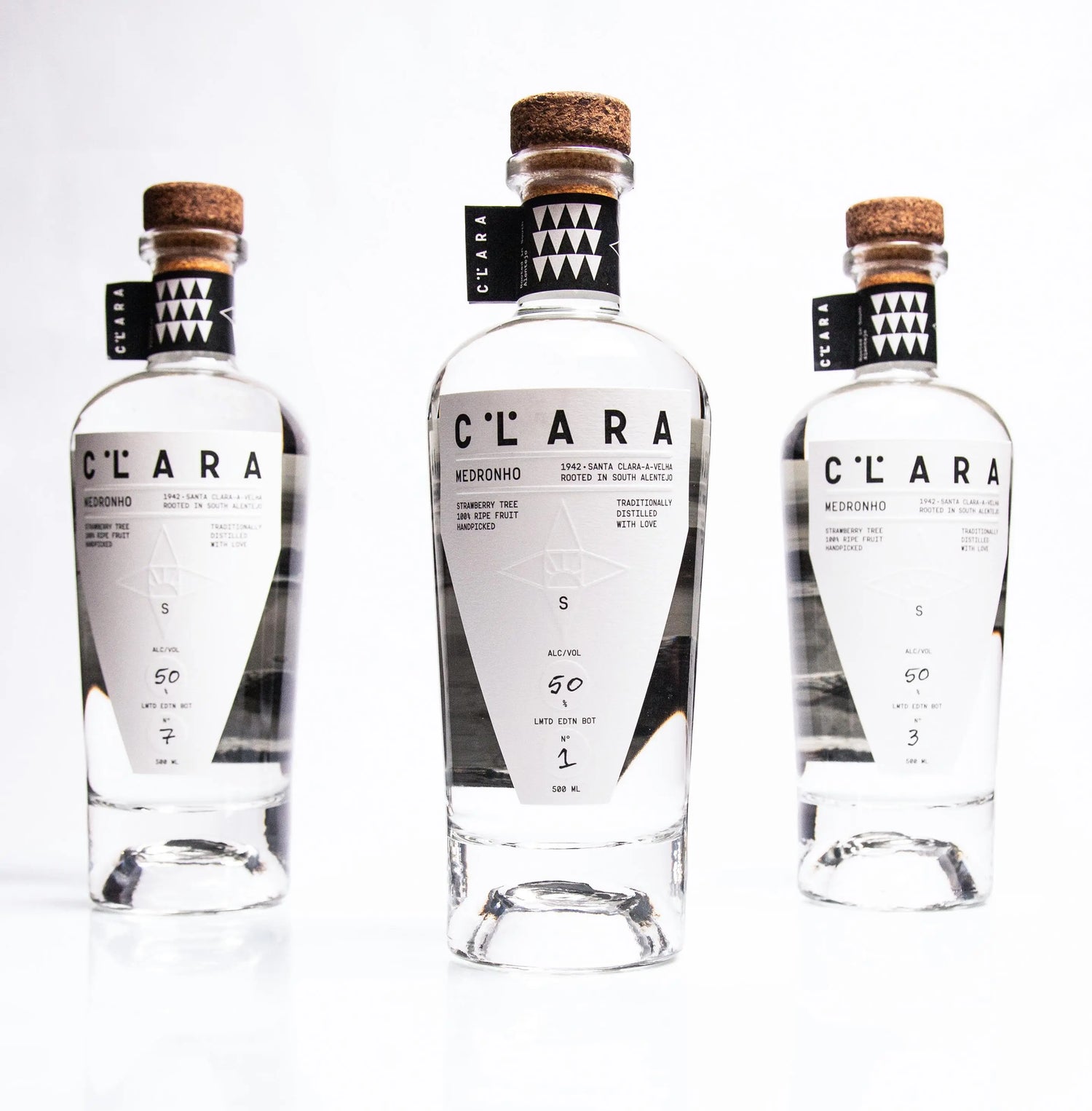
Medronho brandy, a well-kept secret in the south of Portugal
Medronho brandy, or medronheira brandy, is a traditional fruit brandy made from the fruit of the strawberry tree (arbutus tree) typical of the mountains of lower Alentejo and Algarve. Although different techniques are used, it is also done in some areas of central Portugal.
Medronho brandy is the ex-libris of distillates from the lower Alentejo mountains . Everything indicates that this spirit began to be produced by hand, for medicinal purposes, by the Arabs in Monchique, around the 10th century.
Greece, Spain and Italy were also the target of this influence and have their alcoholic drinks based on the Medronho fruit.
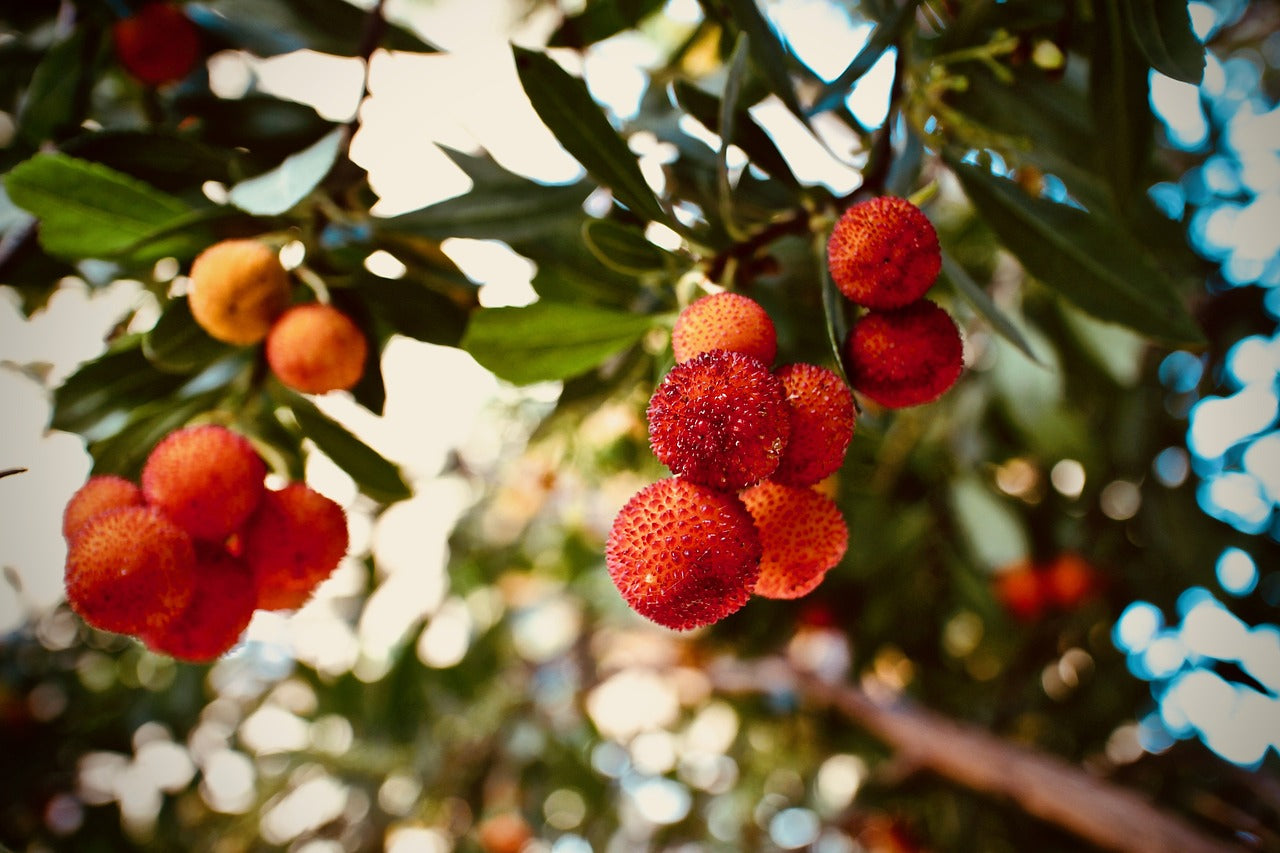
How is brandy made? a simple recipe... 100% fruit
Medronho brandy has a simplicity in production that distinguishes it from other distillates. To produce genuine medronho brandy from lower Alentejo and the Algarve mountains , only 100% ripe fruit is used.
Unlike other distillates, yeast, remains or by-products from other productions, spices or any type of chemical\additive are not used to add color and/or flavor or make any other type of correction.
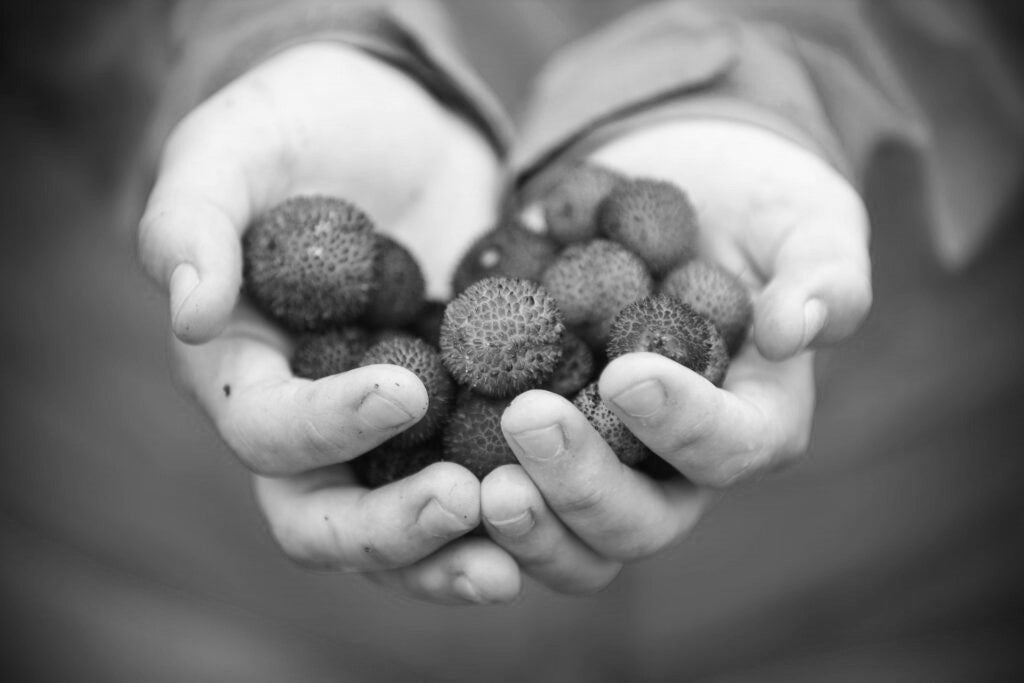
How to make brandy step by step? How is medronho made? the path to the ex-libris Medronho
With a very simple recipe made from 100% ripe fruit, the practice ends up being much more complex! Only by following several procedures and good practices can perfection be achieved.
There are several spirits on the market and those who think that the difference comes only from the alcohol content (between 42º and 54ºVol) are mistaken. The difference comes from 3 steps detailed below :
1- Harvesting the fruits
2- Fermentation
3- Distillation
Any of the bad practices listed below confers negative chemical and sensory qualities to Medronho Brandy and negatively impacts its quality!
For more details contact us!
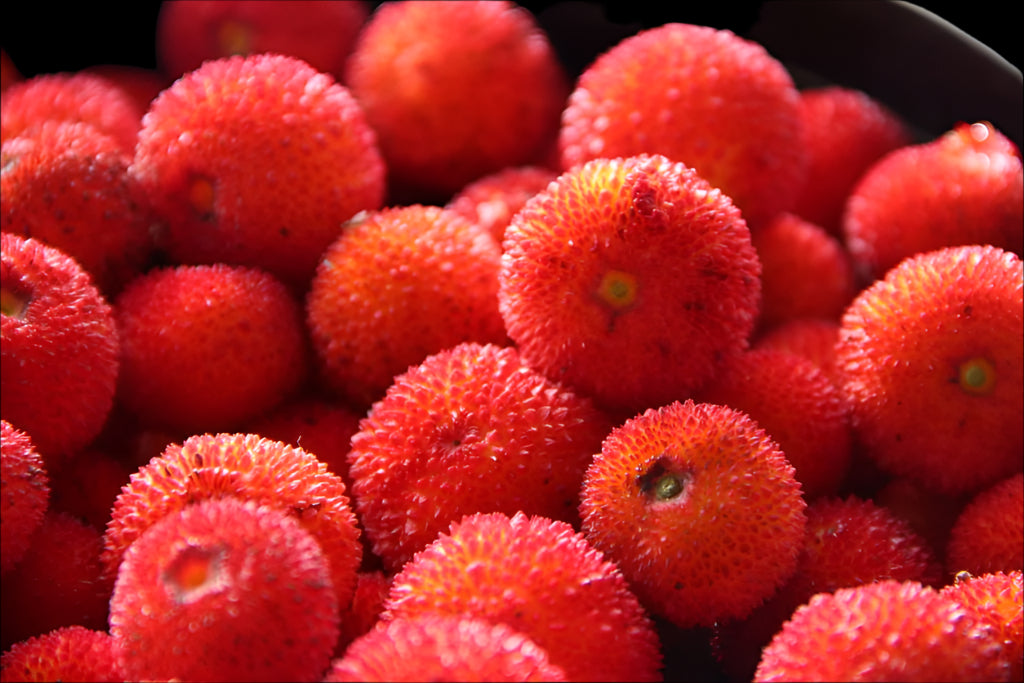
1- Fruit picking
Fruits should only be picked from the tree in a good state of ripeness (Sweet red fruits, good for eating)
Easier said than done.... and this process results in a high number of hours of labor with several passes through the same tree to collect the fruits at the exact point.
Some common bad practices that affect the quality of the distillate are: fruits out of ripeness (green, yellow, orange), picking of peduncles and leaves along with the fruit, picking of fruits from the ground already in a fermentation state
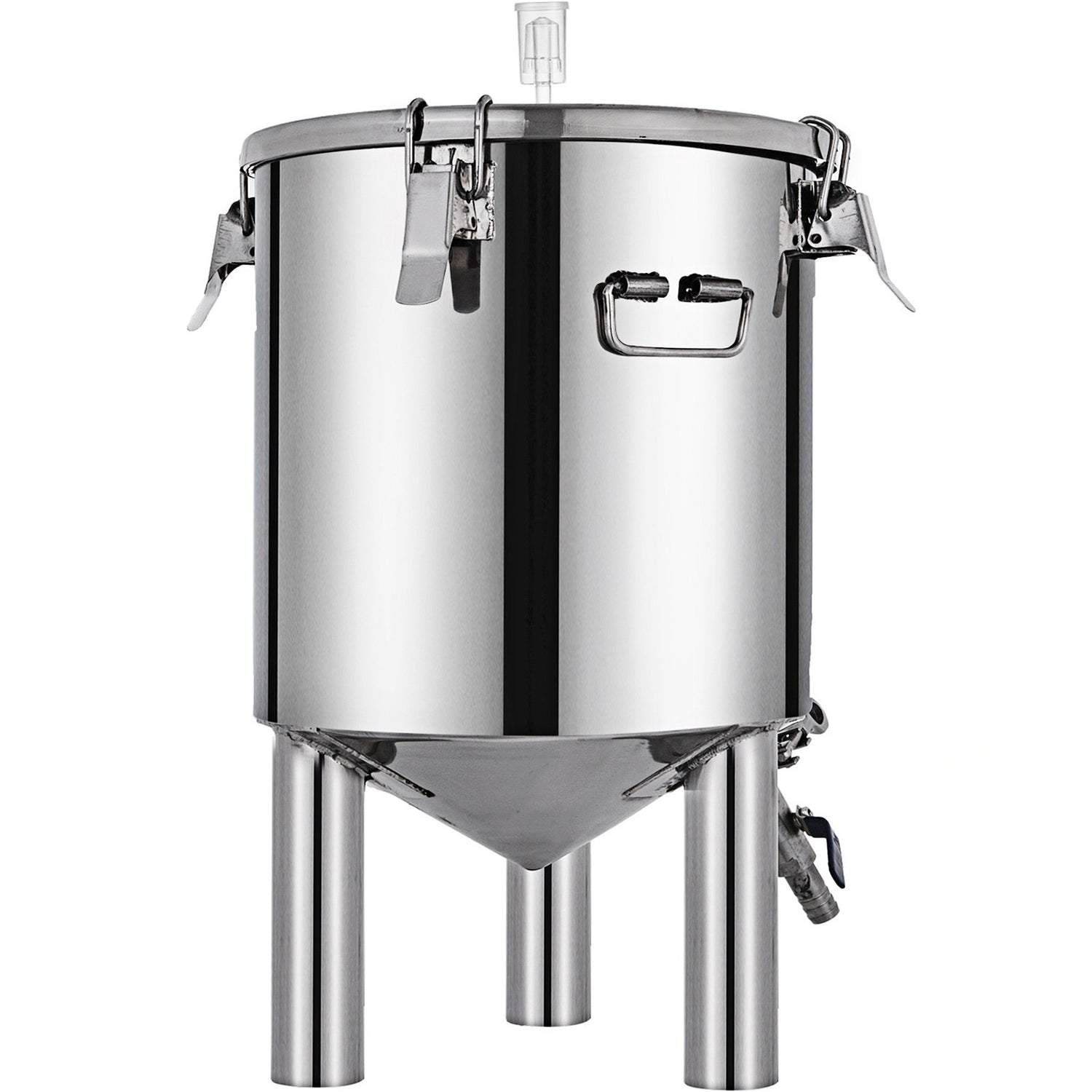
2- Fermentation: How is medronho fermented? How long does medronho take to ferment?
The second stage of the process is the fermentation of Medronho, which occurs after the fruit is harvested.
It is at this stage that Medronho sugars are transformed into ethanol (alcohol).
The fruits must ferment anaerobically in stainless steel containers or other material that does not transmit properties to the fermented product. The temperature should be constant, ideally ~18º and the process will take ~60 to 90 days (2-3 months).
Some bad practices include the use of materials that impart unwanted flavors and other flavors to the fermented product, high fluctuations in the fermentation temperature and contact with the air of the fermented product.

3- Distillation
There are several types of alembic (in its shape) but the basic principles are similar for all :
- Distillation must be done in a copper still. Copper will precipitate sulfur compounds and is a good conductor of heat
- The distillation process has 3 phases of distilled product :
- Head (5%) unused part with many volatile and harmful substances
- Coração (~80%) brandy for consumption which will then be bottled
- Tail (~15%) not used as it has less volatile compounds that affect smell and color (especially ethyl acetate)
Distillation is a science and has been evolving, the description above is simplistic if you want to know more contact us .
Some bad practices include not controlling the temperature for uniform distillation, poor conditioning and cleaning of the stills, poor cuts of the 3 phases with excessive use of "Head" and "Tail" which have compounds that give negative chemical and sensorial qualities to the Brandy. medronho

How many kilos of medronho are needed to make a liter of brandy?
A common question among people who work with this fruit to produce the famous distillate. Although there is no exact answer, the values are between 6 and 10 kg of fruit for 1 liter of Aguardente de Medronho .
This value depends on 4 important factors:
1) State of fruit maturation (ripe fruit will have more sugar and more potential to generate ethanol\alcohol)
2) Terroir , region where the fruit comes from ( lower Alentejo and Algarve, higher sugar level and more flavor)
3) The desired alcohol content in the final distillate
4) The quality of distillation equipment affects the use
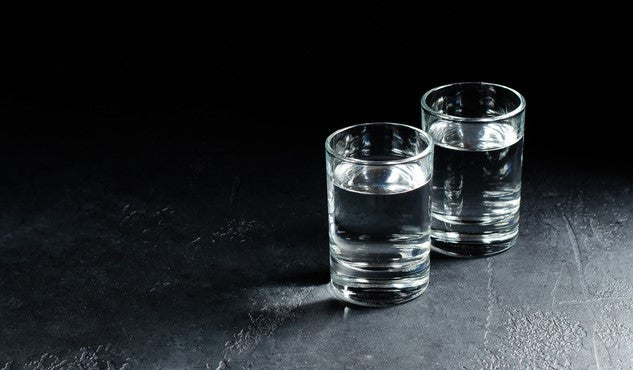
How to drink medronho brandy?
Traditionally drunk in its pure state at room temperature as a digestive.
This drink has been the subject of increased attention, exploration and innovation in recent years by bartenders and mixologists .
Its versatility allows you to add it to various cocktails (from traditional cocktails to new creations). New cocktails with medronho brandy
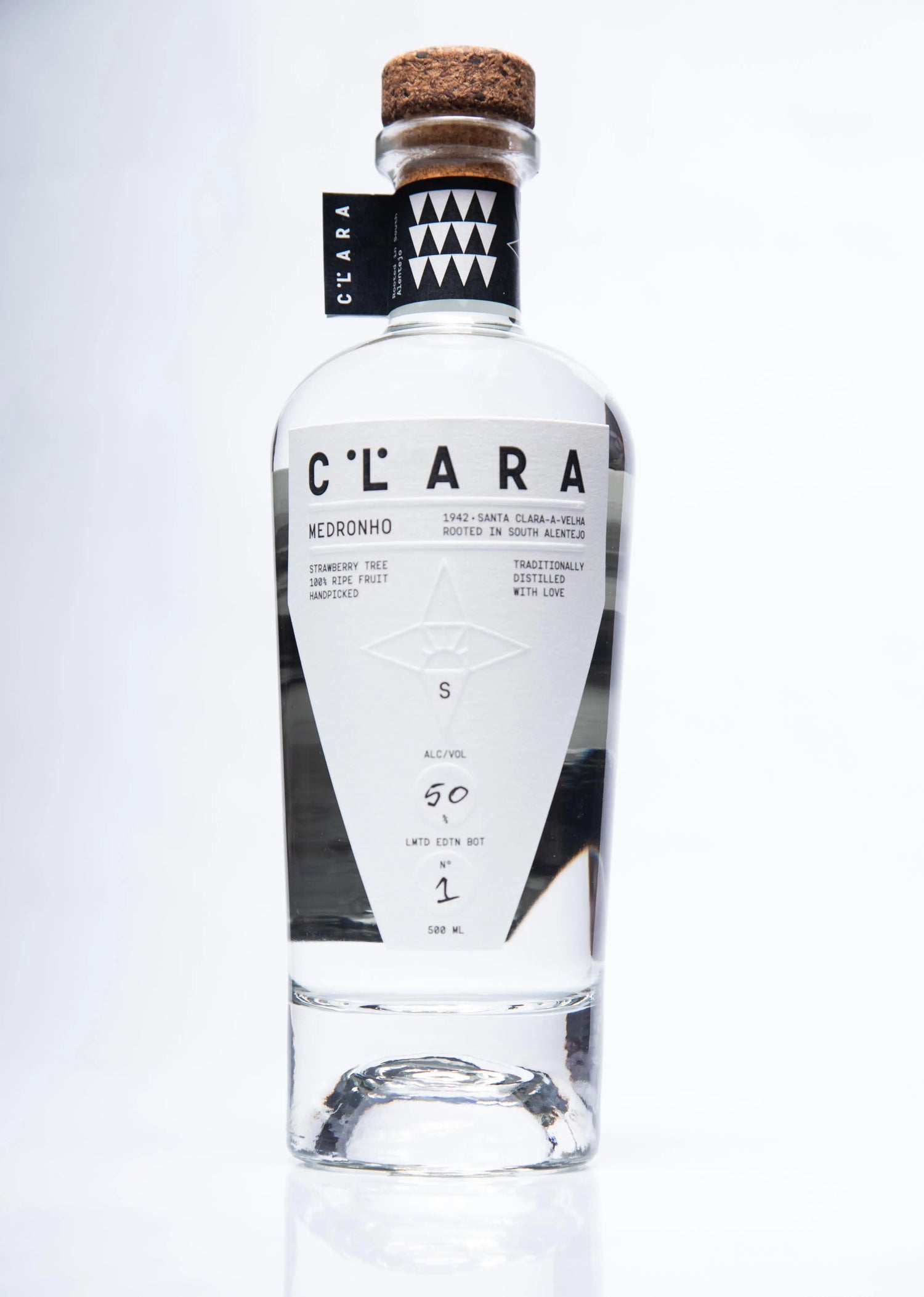
Produto final!
Caracteristicas da Aguardente de Medronho:
Aspecto: límpido
Cor: incolor; topázio
Aroma: a fruto medronho e etéreo
Sabor: a fruto medronho, acidez e alcoólico
Ao contrário de outras aguardentes, como vínicas utilizadas no vinho do Porto que tendem a ser neutras no sabor e não aromáticas, a aguardente de medronho de elevada qualidade é aromática e com sabor pronunciado do medronho.
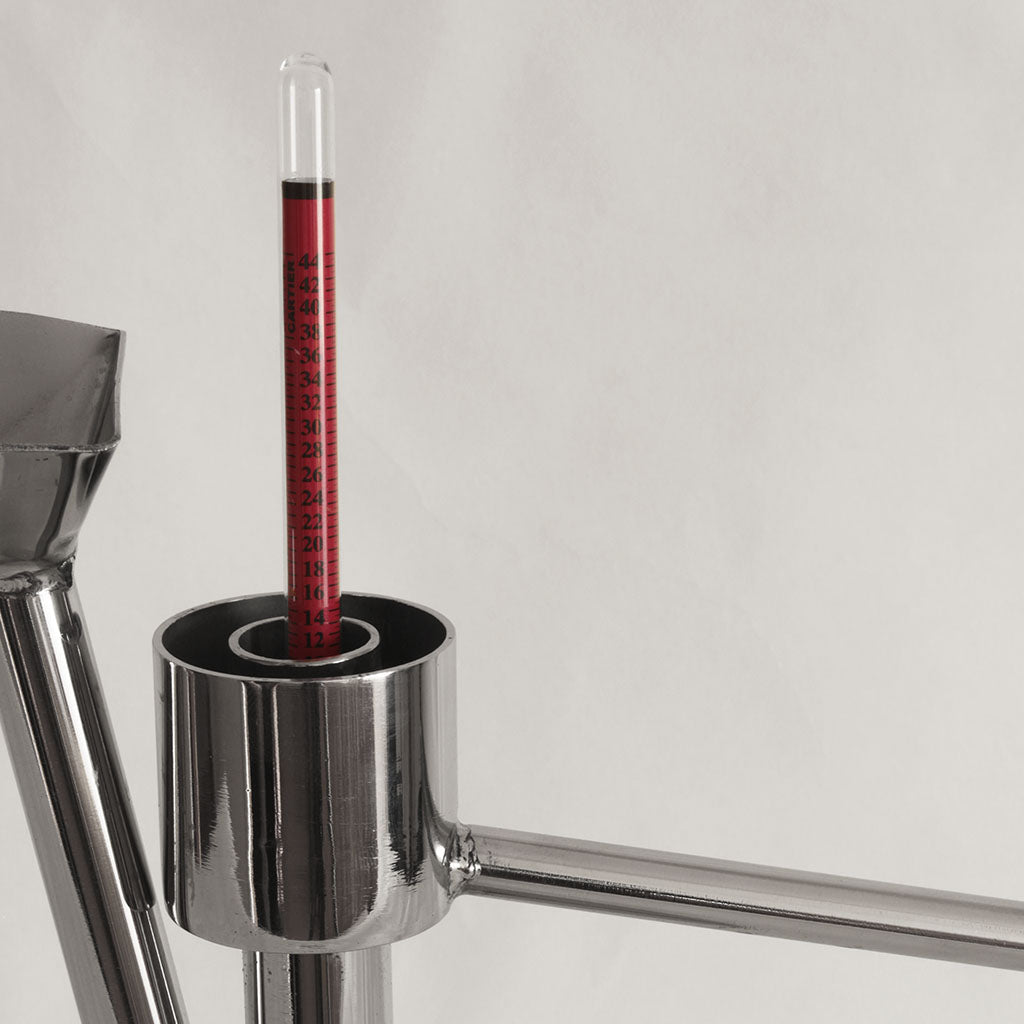
Como medir o grau alcoólico da aguardente?
Uma dúvida comum é saber como aferir o teor ou volume alcoólico da Aguardente de Medronho, posta de uma forma muito simples por alguns “quantos graus tem?” A resposta é simples apesar de serem necessários alguns equipamentos de precisão.
O ponto de partida é definir a escala pois no álcool existem várias escalas que foram sendo utilizadas ao longo do tempo. A escala mais utilizada em Portugal atualmente é a Gay lussac, apesar de algumas pessoas ainda utilizarem a escala Cartier.
Para chegar ao valor final do volume de álcool, são utilizados 2 equipamentos: Termômetro e e Alcoômetro.
Primeiro é utilizado o alcoômetro gay lussac alta precisão, e avaliado o grau. Segundo é medida a temperatura da aguardente. Se a temperatura estiver a 20º o nível medido no 1º passo é o volume de álcool. Caso não esteja a 20º tem de ser feita a correção do valor identificado no 1º passo para saber o volume de álcool correto.
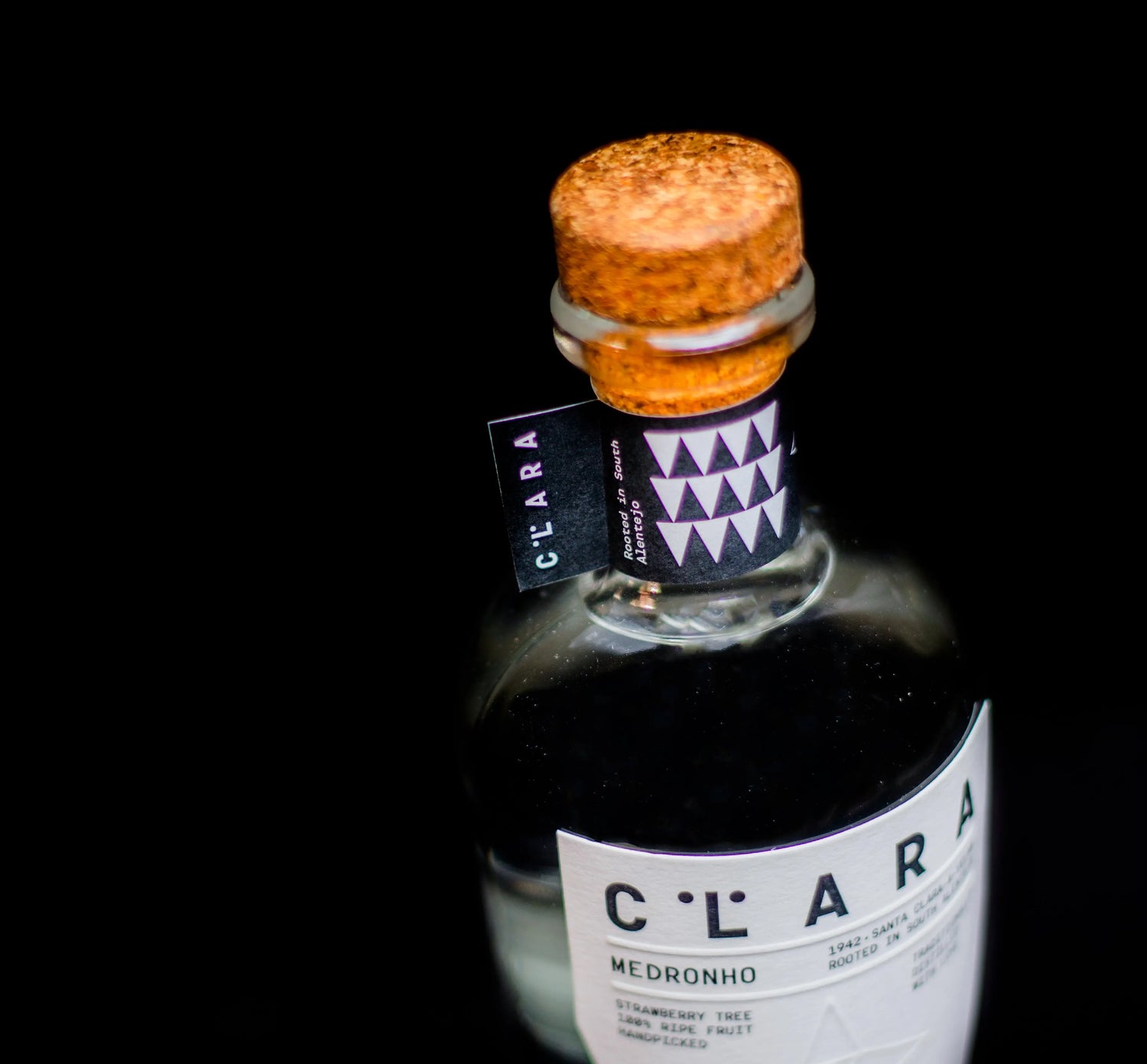
Quanto tempo a aguardente de medronho pode ser armazenada? Qual a data de validade da aguardente?
A aguardente de medronho se devidamente embalada e vedada não tem uma data de validade podendo manter as suas características sensoriais e químicas inalteradas por dezenas de anos.
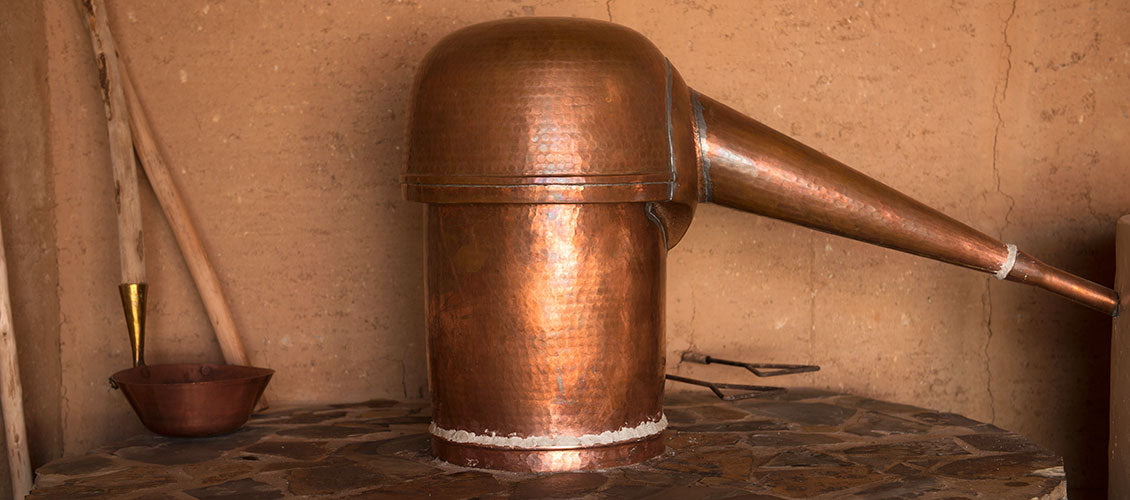
Porque é usado cobre na destilação de medronho?
A zona de aquecimento das massas deverá ser cobre porque existe enxofre nas leveduras, a função do cobre é precipitar os compostos de enxofre (retirar o aroma a enxofre do destilado).
Outra razão para o uso do cobre nos alambiques é porque é um material fácil de moldar e fazer formas específicas e personalizadas.
Nota importante sobre o cobre é a potencial formação de zinabre. A higienização constante do cobre é necessária para não haver criação de zinabre. Se existir zinabre este vai dar uma um aroma e cor azulada ao destilado, degradando assim a sua pureza e qualidade
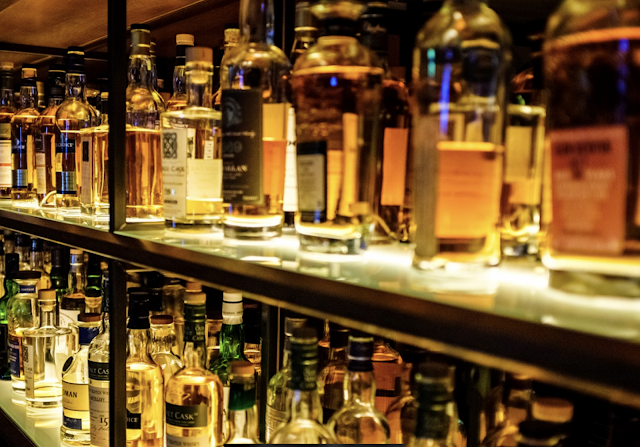
Muitas dúvidas surgem sobre a diferença entre os vários destilados, o que está na sua origem e processos. Pretendemos assim trazer de forma simples as matérias primas e os processos que dão origem a várias bebidas que conhece.
Qual é a diferença entre aguardente de medronho e outras bebidas alcoólicas?
Aguardente de Medronho:
Matéria-prima: Medronho (fruto selvagem).
Processo: Fermentação do medronho, seguida de destilação.
Gin:
Matéria-prima: Álcool neutro, botânicos (zimbro, casca de laranja, etc.).
Processo: Destilação do álcool neutro com infusão de botânicos, principalmente zimbro.
Vodka:
Matéria-prima: Grãos, batatas, uvas, frutas, etc.
Processo: Múltiplas destilações para atingir alta pureza, filtragem para remover impurezas.
Whiskey:
Matéria-prima: Grãos (cevada, milho, centeio, trigo).
Processo: Fermentação do mosto, destilação, envelhecimento em barris de madeira (como carvalho), contribuindo para sabor e cor.
Aguardente Viníca:
Matéria-prima: Vinho.
Processo: Destilação do vinho para aumentar a concentração alcoólica.
Bagaço ou bagaceira:
Matéria-prima: Resíduos sólidos da uva (casca, sementes, talos).
Processo: Fermentação do bagaço e destilação do líquido resultante.
Conhaque:
Matéria-prima: Vinho branco específico de Cognac, França.
Processo: Destilação do vinho e envelhecimento em barris de carvalho, contribuindo para sabores complexos.
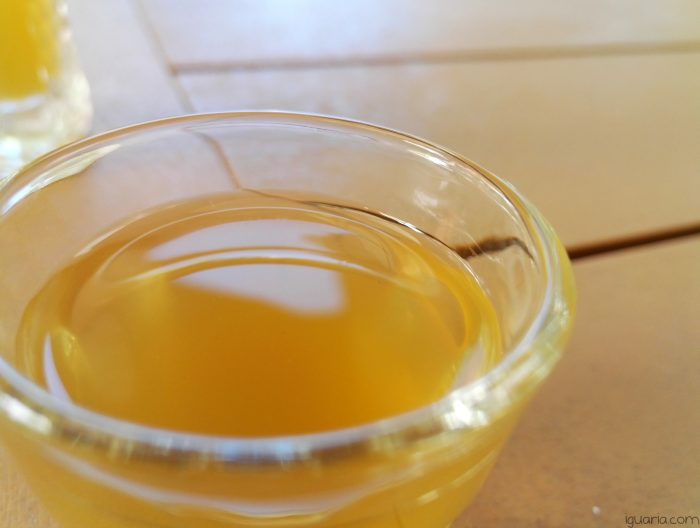
Como fazer Melosa de Medronho?
Melosa é o primeiro e mais conhecido licor feito com Aguardente de Medronho.
Receita tipica da serra do baixo Alentejo e Algarve, apesar de ter algumas variantes na confecção é bastante simples de fazer e muito apreciada fria ou com gelo para aqueles que gostam de bebidas mais doces e não gostam tanto do sabor mais encorpado da Aguardente de Medronho pura.
Ingredientes:
- Aguardente Medronho (500ml)
- Água (500ml)
- Mel (600gr)
- Limão – 1 (Só a Casca)
- Canela – 3 Paus
Como fazer:
1) Colocar num tacho a água, a canela, a casca de limão e o mel, deixar ferver em lume médio alto.
2) Mexer até ficar tudo bem dissolvido especialmente o mel, quando começar a ferver deixa uns 2 a 5 minutos, depois desliga o lume.
3) Retira as cascas de limão e os paus de canela e deixa arrefecer completamente, por volta de uns 30 a 40 minutos
4) Junta por fim a aguardente de medronho e mexe por uns 2 a 3 minutos antes de engarrafar
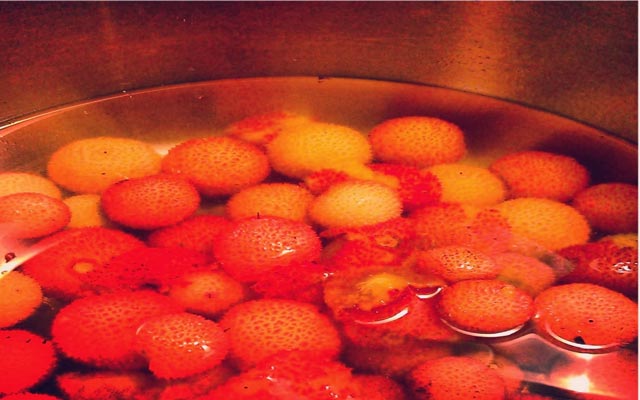
Como fazer Licor de Medronho?
Muitas vezes confundido com o "Medronho" o Licor de aguardente de medronho é um subprodudo da aguardente de medronho.
Longe da alquimia do Medronho, é uma receita típica da região centro e norte de Portugal onde a arte dos licores é bastante explorada.
Ingredientes:
-1 litro de aguardente medronho
-1 kg de medronhos frescos
-1 kg de açúcar amarelo
Como fazer:
1) Misturar a aguardente de Medronho e medronhos
2) 14 dias após, acrescentar 1Kg de açúcar amarelo
3) Após 1 mês, filtrar o licor retirando os medronhos
Want to know more about Medronho brandy?
If you want to know more about arbutus brandy and all stages of the process (fruit picking, fermentation, distillation and packaging) do not hesitate to contact us at the link below or claramedronho@gmail.com
